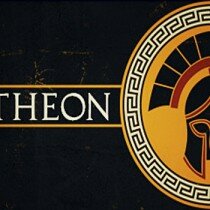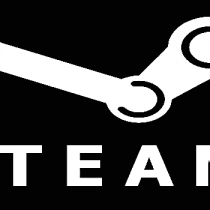So, in recent articles we have looked at examples of JRPGs and what features define them. From turn-based combat to the aesthetics and every point in between, JRPGs are broadly Eastern (and specifically Japanese) in their form, standing fairly distinctly apart from their western counterparts.
Interestingly, however, there isn’t really a Western Role Playing Game (WRPG) genre, at least not a generally recognised one. These games are, generally, just referred to as an RPG. Games such as the Mass Effect Trilogy and Knights of the Old Republic could certainly be argued as being distinctly ‘Western’ RPG games, perhaps the former more so than the latter. WRPGs seem to have been a somewhat un-recognised genre throughout gaming history…or have they really? WRPGs (or just RPGs if you prefer) have existed for a long time and many have been very well renowned. Titles such as the first Fallout games and even the Baldur’s Gate games can be seen as primary examples of WRPGs. Perhaps it’s just that I’m based in the Western market, but I find it interesting these titles are not grouped together by origin like JRPGs.
So, there being JRPGs, with their distinct structures and styles and WRPGs, with their contrasting style and focus, the RPG market is West Side Story or Romeo and Juliet situation right? Two differing sides, distinct and separate and never the two shall meet sort of thing? Well, that’s not necessarily the case. There are developers out there who have tried to combine the two styles, to meld JRPG structure with western style and story.

Ladies and gentlemen let me introduce the NOT fellowship
What they got was Lord of the Rings: The Third Age (hereafter referred to as 3rd Age for the sake of my typing fingers!), a pretty unique game in the annals of RPGs.
Released by EA in 2004 for the original Xbox, 3rd Age is a JRPG-style turn-based combat game built around the Lord of the Rings world. Specifically, the world as depicted in the Peter Jackson-directed movies. EA, crucially, held the rights to the movie licensed details, not the novels as a whole.
And boy, do they make use of that licence. The game is chock full of excerpts from the films. These are used as a kind of stock-footage narrative device to link levels of the game. Ostensibly narrated by Gandalf, the basic story finds you controlling the Human Berethor, who is following after Boromir. Events conspire to band Berethor together with a variety of Middle-earth’s residents to follow in pursuit of the fellowship, always remaining just behind them and following a similar structure to the Aragorn side of the Fellowship’s journey in the films. This finds you wandering around various areas, having random encounters and gathering loot. The combat is pretty typical turn-based combat fate of the Final Fantasy X-2 variety and is a pretty solid and enjoyable experience.
The problem with the game really stems from the storyline. While the footage from the films adds authenticity and much higher cinematic values than could otherwise be achieved, it constantly reminds you that you are lesser players in a grand context. You’re relegated to following after the important people, always a step behind the main action, which is initially pretty humbling and rather detracts from the perceived stakes somewhat.
Or so it would initially seem at any rate.
It’s towards the end of the section in the mines of Moria that this changes somewhat. Perhaps recognising that playing a set of characters following after the Fellowship is hardly the makings of a grand adventure and that any action is going to feel insignificant in comparison to the escapades of the main group, the Developers decided to have the New Fellowship (as I will now refer to the protagonists’ group) catch up to and assist the real Fellowship at various points. This results in the party coming across the fight between Gandalf and the Balrog at the bridge of Khazad Dum and joining the battle to assist Gandalf. This, and other points like it, is where the game really falls down. Rather than heightening the grandeur and scale of the game, it ends up cheapening the events in question and really undermines the sense of immersion and disbelief.

No… Just no…
The game was almost universally panned for these decisions and it’s easy to see why. Having new characters involved in the story and being, at many points, demonstrably more powerful than the Fellowship was questionable at best, but having them combat creatures that are meant to be beyond mortal creatures? That was never going to be accepted. Fans were up in arms and the game never really recovered from that one design decision. It also didn’t help that the final boss fight, and you won’t believe me I promise, found your party at the top of Barad Dur fighting the Great Eye of Sauron with swords, arrows and magic in s stand up fight.
Yes really…
The thing is, this really wasn’t entirely the fault of the developers. Yes it’s a pretty questionable decision, but they were not left with a lot of choice. Remember when I said that EA only held the rights to the film version of the Lord of the Rings story? That meant that they could only use things mentioned in the films or not mentioned in the books or films. Anything in the books, but not in the film was off limits due to the rights being held independently elsewhere. While this did not prevent EA writing new material (something that arguably would have been a better choice) it does go some way to explaining why they chose to go the way they did. Writing new material would move the story a long way from the main Lord of the Rings story that people know, so would have been risky.
Questionable writing aside, the 3rd Age game is a very solid and enjoyable RPG in the Japanese style, mechanics wise and the Lord of the Rings world, through film footage, is expertly overlaid on this structure to form a stylistically excellent game. While playing it thought, you get a slightly disquieting feeling, as if something’s not quite right. This amalgamation of Eastern and Western styles is, while enjoyable, unusual and feels out of place; not by any inherent flaw but more due to how unusual it is to see the two styles mix.

The game mechanics themselves are pretty damn good
In many ways it’s a genuine shame that the narrative choices made by EA coloured people’s opinion of what is, at its core, an extremely competently created RPG. Yes it may be a flawed and, at times ludicrous, concept, but the unique aspect of the game, the Western style with Eastern mechanics, is an inspired and potent combination.
Sadly, with the game having sunk beneath the negative reaction to the narrative, it never got the recognition it really deserved and this almost unique specimen may well, I fear, prove to be the last East/West RPG mix we see for some time, though I hope I’m wrong on that count.
© 2013 – 2014, zero1gaming.com. All rights reserved. On republishing this article your must provide a link to this original post
About Paul Izod
Paul Izod is a lifelong gamer. Since he was old enough to tap at his Dad's PC's keyboard he's been a gamer. Dedicated and often opinionated, you can be sure he'll always have something interesting to say about the subject at hand. Find him on Twitter at or or email him at
•




